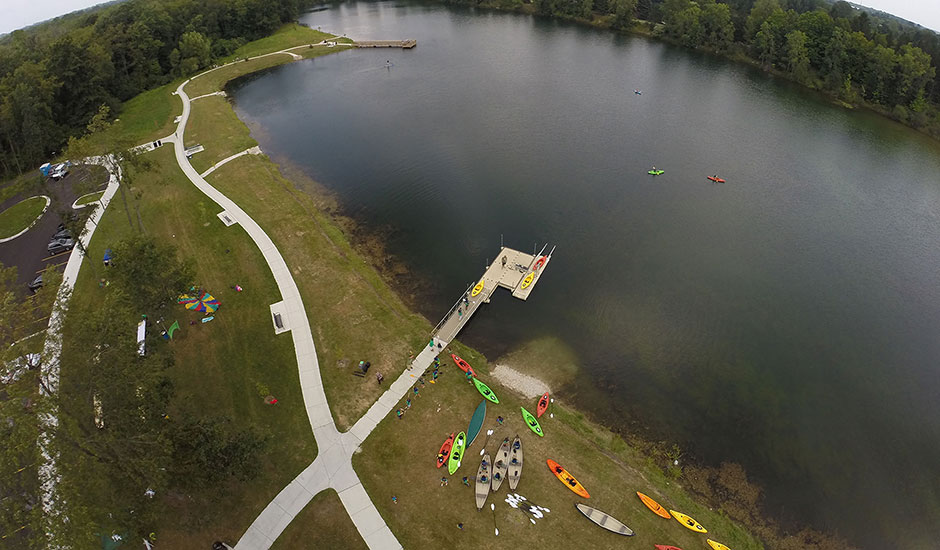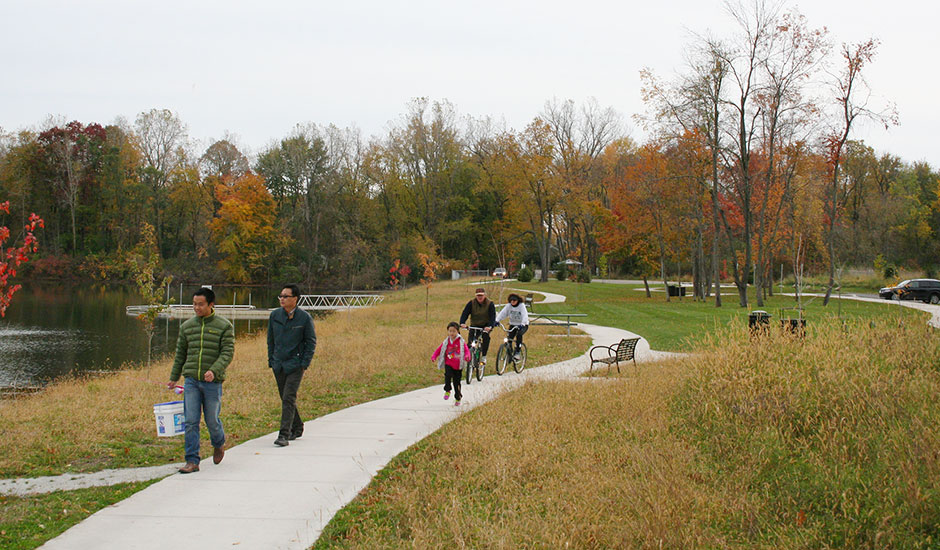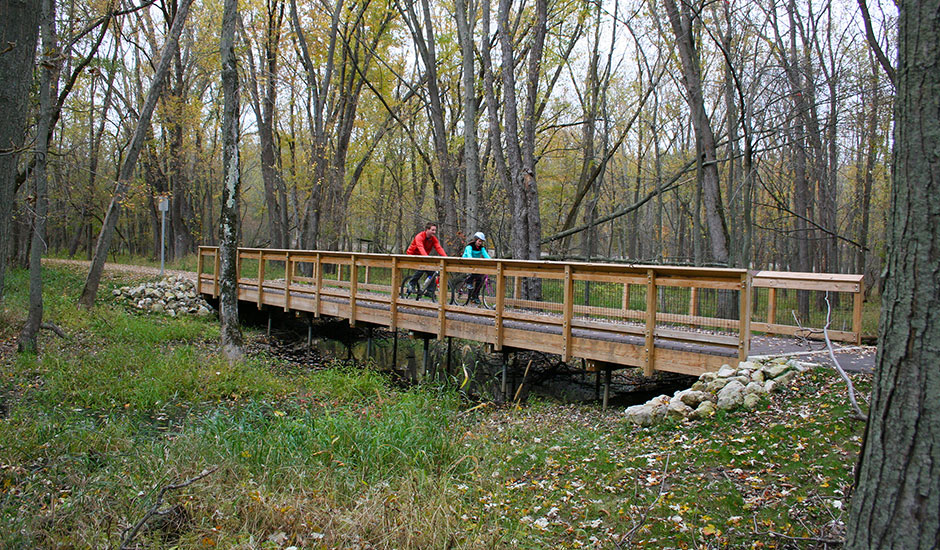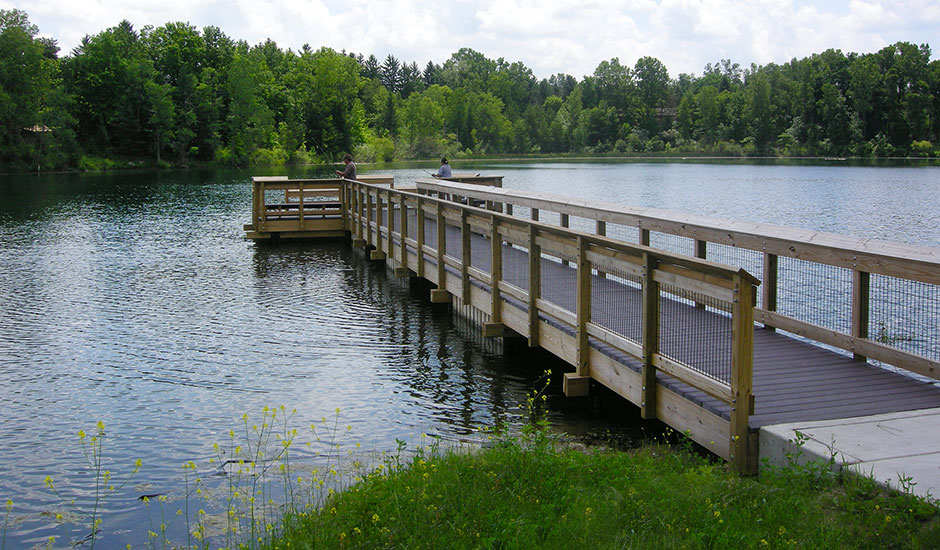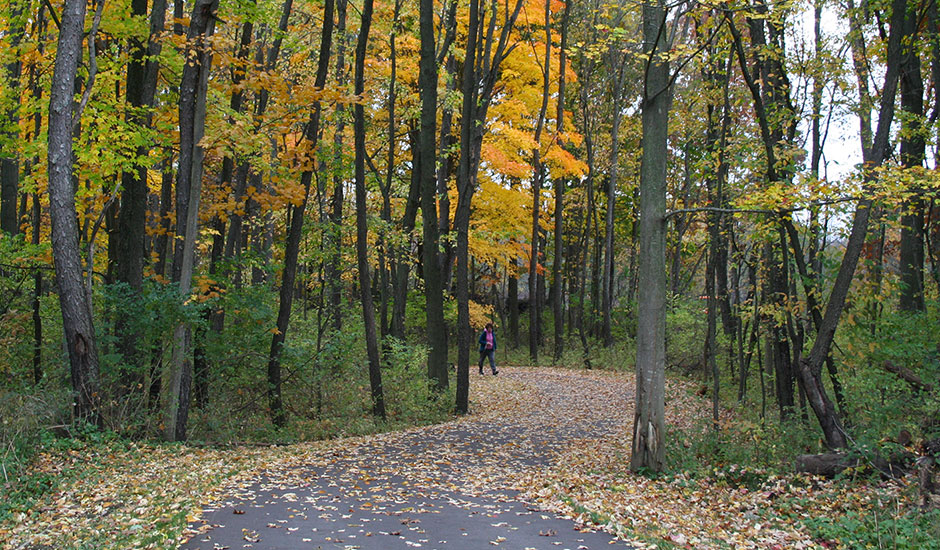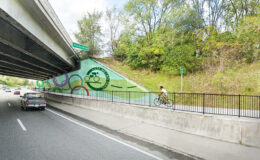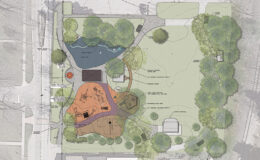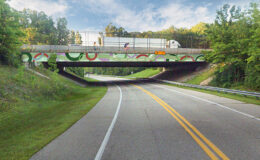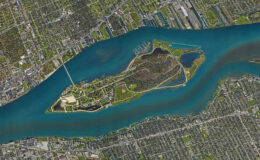Ralph W. Crego Park has reopened to the public as the centerpiece of the City of Lansing’s park system after engineering and landscape improvements transformed the abandoned 200-acre facility into an environmentally-sustainable community asset. Closed for 28 years due to industrial contamination from the previous owner, the park was revived with a $500,000 grant from the Michigan Department of Natural Resources Trust Fund and $250,000 from the City’s parks millage fund. The project was recognized by the Michigan Recreation and Park Association with an Outstanding Park Design Award at their Annual Conference in February 2015.
Improving habitat and providing accessibility to the park’s 15-acre Fidelity Lake were primary goals. As a subconsultant to Eng. Inc., Wade Trim provided landscape architecture and structural engineering for the permeable-surface parking area, a handicap-accessible fishing pier and canoe/kayak launch, walkways and green space along the lake shore, site restoration, and a half-mile paved pathway connecting to the popular Lansing River Trail.
To enhance fishing, an innovative design was implemented using fish cribs underneath the pier to provide habitat for smaller fish. The pier extends over the deepest and most diverse part of the lake to provide access to the best fishing spots. Several large rock outcropping steps placed intermittently along the lake shore provide safe access down to the water’s edge and serve as fishing spots, even as lake levels fluctuate. Existing steep banks were sloped back and restored to provide fishing access along the shore while reducing ownership and maintenance costs, improving safety, and reducing bank erosion. Native plantings including a variety of tree and shrub species, as well as restored prairie and wetland edge plantings, allow water to filter and purify naturally, increase habitat and reduce long-term maintenance.
The natural landscape was preserved by working within the natural configuration of the land and understanding vegetation and drainage patterns. Project elements requiring larger footprints, such as the parking lot, were sited in previously disturbed areas to minimize further disturbance to natural features. A meandering trail was designed to protect mature trees, and a screened access gate maintains and shields the City’s natural resource processing center. Since the park is located in the floodplain of the Red Cedar River, trail improvements included a pedestrian footbridge across the floodway to protect surrounding wetlands.
“It’s great to see kids ride down the River Trail, see the opening to the lake and say, ‘I never knew this existed,’ ” said Brett Kaschinske, Director of the City’s Parks and Recreation Department. “The end result is even better than imagined. This park will be enjoyed by the community for years to come.”

